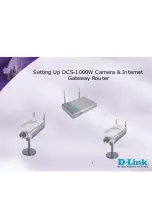
Configuring Client Steering and Node
Steering on your Velop
The Wi-Fi Settings widget on the Velop web interface now has a new
Advanced
tab where
you can configure
Client Steering
and
Node Steering
. Both features are enabled by
default as recommended and should only be turned OFF as a last resort once you have
exhausted all other Wi-Fi troubleshooting techniques.
NOTE:
In order for a client to roam seamlessly, the client must support 802.11k and
802.11v. For clients that lack 802.11k, a node will not be able to determine where to steer a
client or even if a client needs steering. The clients lacking 802.11v, on the other hand,
can’t be directed to change to another node.
If you know that your device supports 802.11k/v and you have exhausted all other standard
Wi-Fi troubleshooting techniques, you can then try to isolate the issue by turning OFF the
Client Steering or Node Steering features as a last resort.
For example, if some clients are connected to the 2.4 GHz instead of the 5 GHz, try turning
the device OFF/ON first. If the issue continues, isolate it by turning OFF Client Steering to
check if this fixes the issue.
If a device is connected to the farthest node, try powercycling that node. If the issue
continues, then try turning OFF Node Steering to isolate the issue.
NOTE:
Disabling the Node Steering option will not affect a Velop network. This will only
stop the primary node from sending suggesting connection changes to the secondary
nodes.
DFS
The
Dynamic Frequency Selection (DFS)
option is enabled by default and only appears
for regional product models that support DFS channels such as in Europe, Middle East and
Africa (EMEA). However, you can disable DFS if you have clients that do not support DFS
































